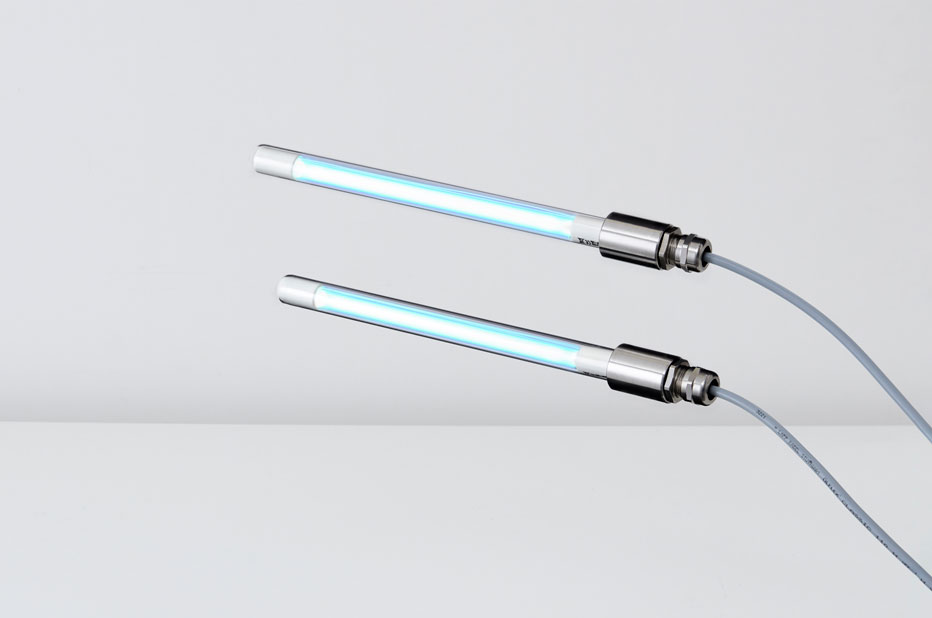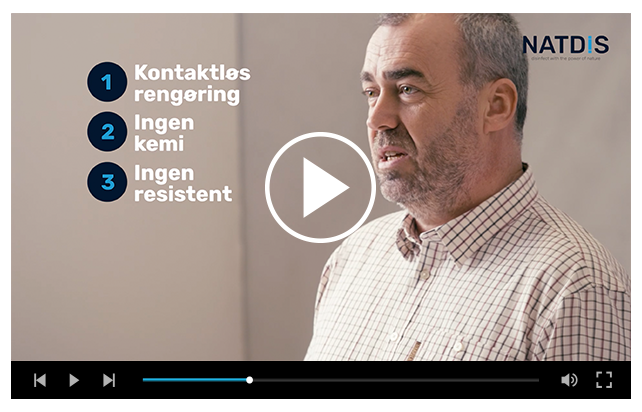Natural disinfection
At NATDIS, we believe in natural disinfection. That is why we use UVC light to disinfect liquids, air and surfaces.
When we use UVC light correctly, we can achieve very effective disinfection, completely without chemicals. It is a contactless method because we can disinfect surfaces simply by using light.
Another big advantage with UVC light is that it does not require any after treatment process. If we clean a room with harsh chemicals, we need to ventilate afterwards to make sure the air is clean, fresh and ready for people again. Unlike the chemical disinfectants, UVC light is only active when the lamp is on, and we can therefore use the room as soon as the lamp is off.
UVC disinfection
To understand what UVC is, we need to look at the different types of UV light. UV light is a general term for several wavelengths that cover UVA, UVB and UVC.
UVA and UVB are what we experience when we go out in the sun. These UV types are only slightly disinfectant when compared to the third type, UVC, which has a well-documented disinfectant effect. That is why we use UVC for effective disinfection when we want to kill bacteria, viruses and fungi.
UVC light works when the rays hit the microorganisms and penetrate the cell, destroying the DNA and RNA in the cell. It prevents the cell from being able to reproduce, thus deactivating and killing it.
Learn more about UV light here
Disinfection for every need
UVC light can be used as a disinfectant in many ways. Learn more about how UVC light can be used to disinfect different areas below.
Disinfection of surfaces
When surfaces are touched by the same people several times, a high risk of infection arises. Therefore, effective disinfection is important, which ensures that bacteria do not spread.
Disinfection of surfaces is relevant in:
- Clean rooms and laboratories
- Offices, meeting rooms and canteens
- Conveyor belts and packaging lines
- Sluices and entrance rooms
Read more about disinfection of surfaces here
Disinfection of air and ventilation
A number of microorganisms can spread through the air, and this can result in a number of challenges for many companies. If, for example, you have food production, it is important that you do not get unclean air into the room when handling food.
In connection with this, we can insert UV lamps into the air duct and thus ensure that no fungi, bacteria etc. enter production. If you already have a ventilation system, we also have the option of connecting our disinfectant modules, so the premises only receive clean air.
Read more about disinfection of air here.
Disinfection of liquids
UVC light is also particularly suitable for disinfecting liquid. For example, this could be liquids such as juice and water to be consumed by the user, or it could be process water from refrigeration systems. We can disinfect all liquids that need to work optimally with UV light.
Read more about disinfection of liquids here
Disinfection of hands
During the day our hands touch many surfaces and objects. Therefore, good hand hygiene is essential when we want to stop the spread of infection.
At NATDIS, you can rent various equipment that can improve hand hygiene at your company. In this case we do not use UVC light, but UVA light instead. UVA light cannot be used for disinfection, but it is an important tool if you want to check cleaning routines, sources of pollution, etc.
Practising hand hygiene, such as hand washing or distribution of hand sanitiser, is important to maintain a high level of hygiene.
Read more about how you can practice hand hygiene here
Disinfecting virus, bacteria and fungi
UVC light can be used to disinfect viruses, bacteria, and fungi, but there is a big difference in how much light it takes to kill them. Therefore, it is important to know which organism you are trying to kill and in which environment it is found. When we know this, we can find the right dose.
When we have the right information, we can calculate for how long a lamp should shine on a pathogen at a given distance to inactivate its DNA/RNA.
Read more about the effect of UVC here
When is disinfection needed?
For example, when we clean with water and soap, we move the bacteria – we do not kill them. In everyday life, cleaning is a good solution to remove dirt and prevent the multiplication of microorganisms.
Disinfection, on the other hand, should be used when it is necessary to kill microorganisms to avoid the risk of infection. This is relevant in agriculture, industry and healthcare.
If you are unsure whether disinfection is relevant in your company, you are welcome to contact us, and we will help you.
Efficient and chemical-free disinfection
Do you need disinfection? Do not hesitate to contact us. Call us +45 22 680 680 or write us here
We are always ready to custom-make a NATDIS solution using UVC light to match your needs and wishes.

